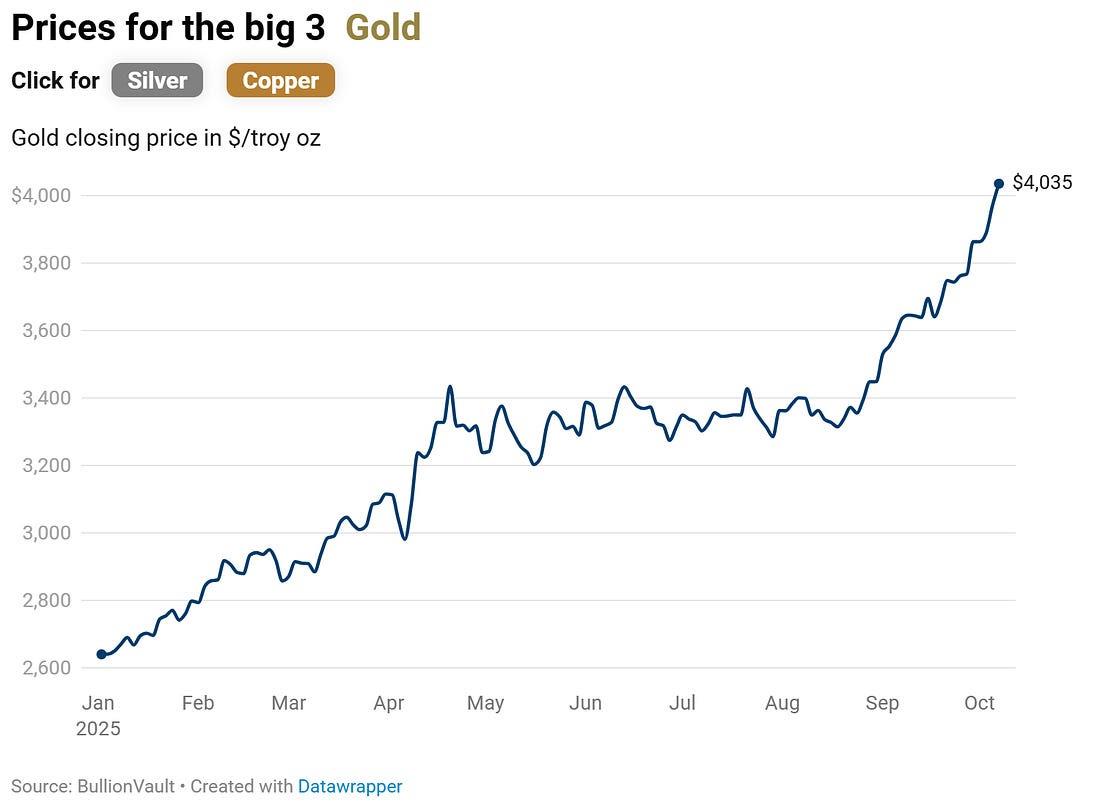
What's Next For The World's 'Big Three' Metals?
Silver lease rates in London and Shanghai, normally in the 1-2 percent range, have spiked to 6 percent – a clear sign of hoarding.
Meanwhile, the world's largest institutional investors are boosting their exposure to paper silver through futures and options markets across the globe.
Like gold, silver is in a secular bull market, though its path will be more parabolic and volatile. The next target is the $54 highs set up by the Nelson Bunker Hunt corner attempt in 1980 and the Arab Spring/European debt-crisis spike in 2011.
Mixed fortunes for the red metalCopper will be to the 2020s what crude oil was to the 1970s, as the human race transitions from the hydrocarbon age to the AI age.
The red metal opened 2025 at $8,700 per metric tonne on the London Metal Exchange (LME) and now trades at $10,608, a 16 percent year-to-date gain.
Unlike gold and silver, copper is not yet in a structural bull market. Known in trading circles as“Dr Copper” for its uncanny ability to diagnose the health of the global economy, half of its demand is tied to the industrial cycle in the US and China – both now in a synchronised slowdown.
In China, deflation haunts the property market, resulting in anaemic demand for copper cables.
President Xi Jinping has ordered China's 138 EV makers to consolidate – an exercise in Maoist-capitalist restructuring that threatens to slash copper demand.
See also An emerging market fintech that is my fave potential double bagger!A deflationary big chill haunts the world commodity markets. It confirms my conviction that copper may fall to $7,000 a tonne on the LME within the next 12 months.
Still, the red metal may well triple to $30,000 in the next decade as the AI revolution reinvents the global power grid, thereby increasing demand for the world's fastest conductor of electricity.
Meanwhile, Brent has plunged from $130 a barrel following Russia's invasion of Ukraine to $65 now. The global supply glut suggests Brent will achieve Goldman Sachs' early 50s target next year.
Natural gas has fallen from $10 to $3.40. Wheat, corn, nickel, tin and aluminium prices are all under pressure.
The only reason Dr Copper has shown resilience amid an emerging US consumer credit crunch and China's trade war and shadow banking crisis is that metals typically spike on sudden supply shocks.
In the near term the outlook remains bearish, but from 2027 onward copper's demand curve is set to soar as it displaces crude oil as the world's most critical strategic commodity.
Also published on Medium .
Notice an issue? Arabian Post strives to deliver the most accurate and reliable information to its readers. If you believe you have identified an error or inconsistency in this article, please don't hesitate to contact our editorial team at editor[at]thearabianpost[dot]com . We are committed to promptly addressing any concerns and ensuring the highest level of journalistic integrity.
Legal Disclaimer:
MENAFN provides the
information “as is” without warranty of any kind. We do not accept
any responsibility or liability for the accuracy, content, images,
videos, licenses, completeness, legality, or reliability of the information
contained in this article. If you have any complaints or copyright
issues related to this article, kindly contact the provider above.
Most popular stories
Market Research

- Crypto Market Update: Pepeto Advances Presale With Staking Rewards And Live Exchange Demo
- Kucoin Appeals FINTRAC Decision, Reaffirms Commitment To Compliance
- Cregis And Sumsub Host Web3 Compliance And Trust Summit In Singapore
- Chartis Research And Metrika Release Comprehensive Framework For Managing Digital Asset Risk
- Nodepay Launches Crypto's Largest Prediction Intelligence Platform
- Schoenherr Opens London Liaison Office As Gateway To Central Eastern Europe




















Comments
No comment